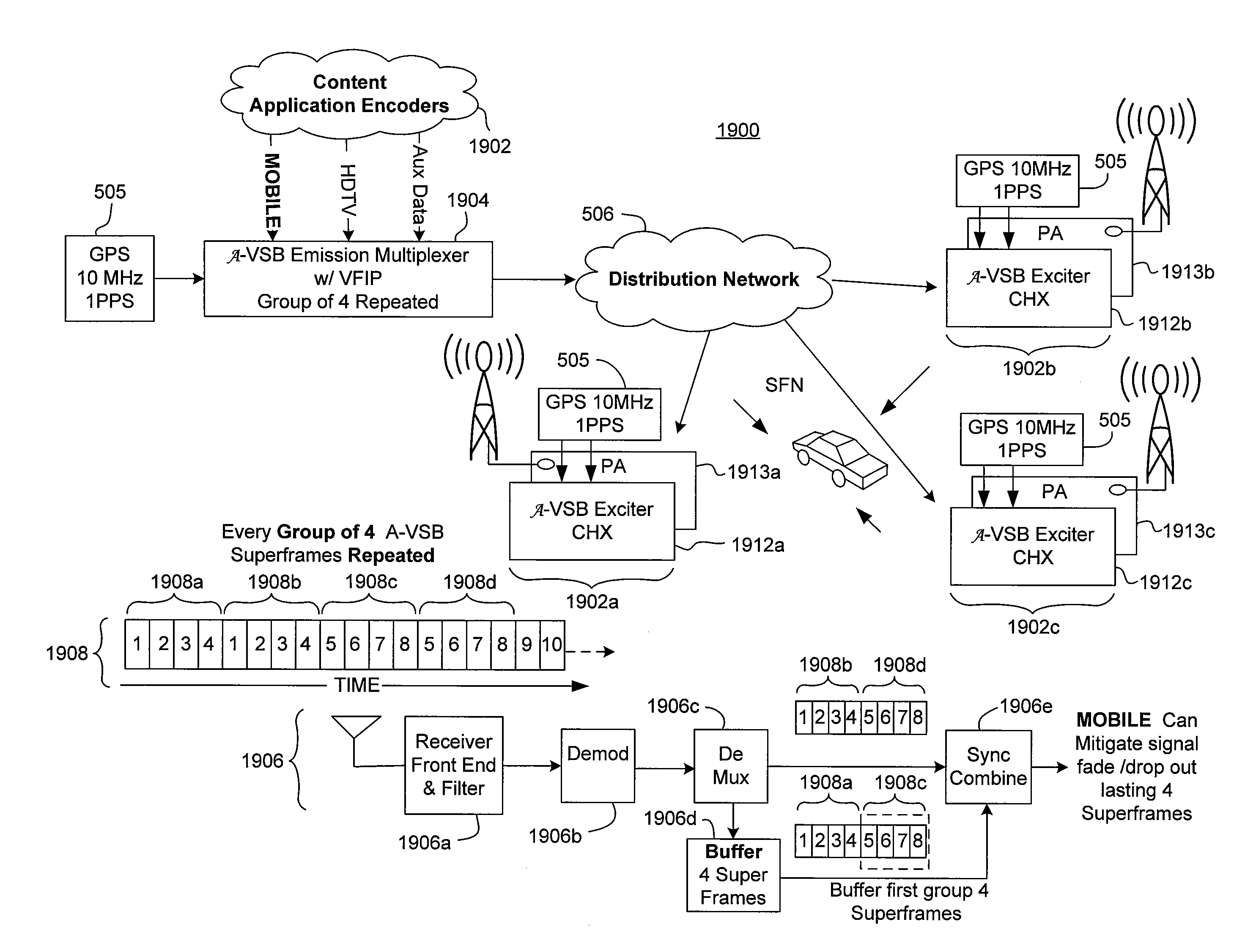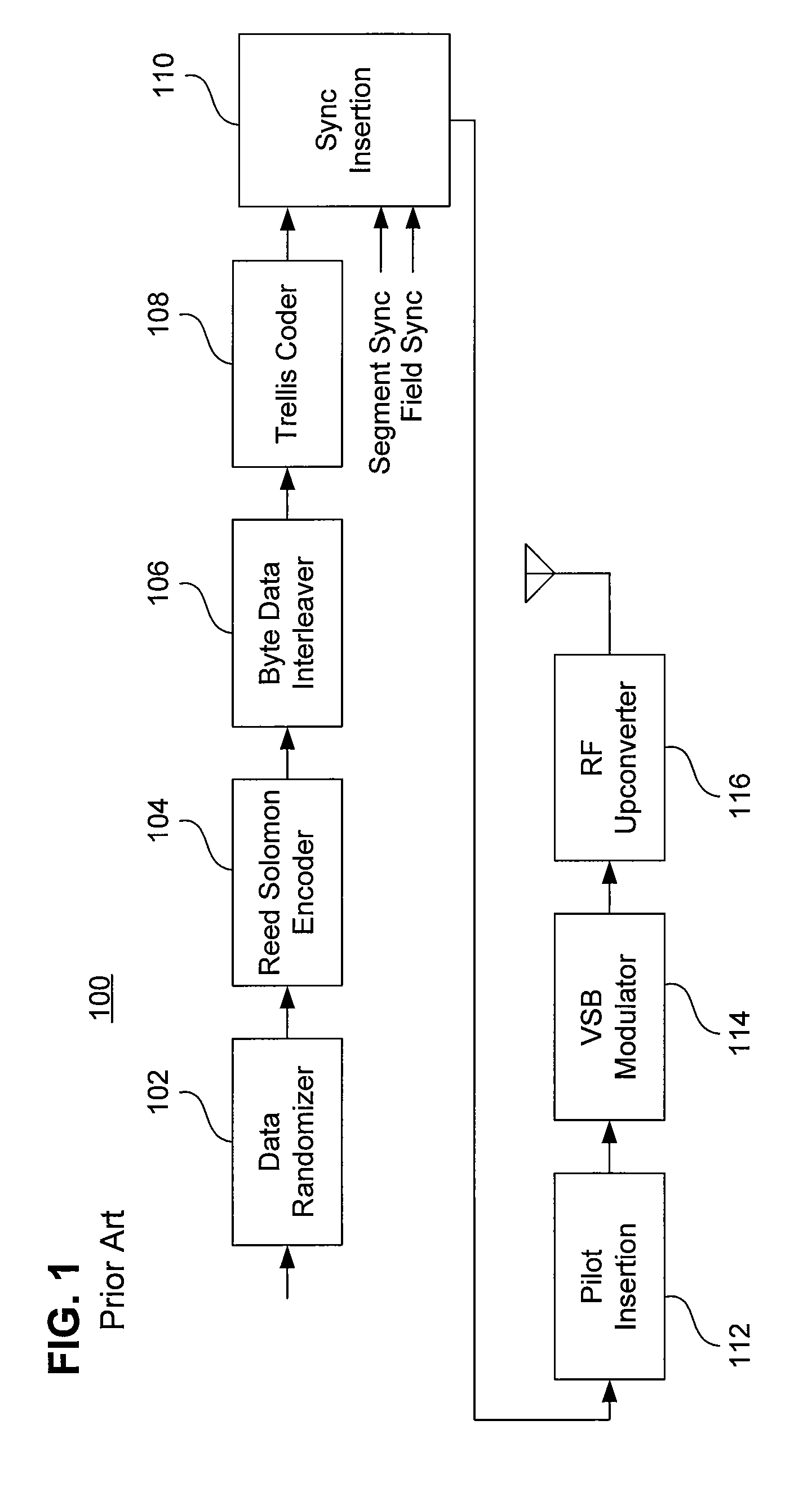Apparatus, systems and methods for providing time diversity for mobile broadcast services
a technology of mobile broadcasting and mobile devices, applied in the field of broadcasting networks, can solve the problems of complex multipath propagation problems, difficult to find one location capable of serving all population centers, and burden on the ability of receiver equalizers to handle signal echoes, etc., and achieve the effect of improving service conten
- Summary
- Abstract
- Description
- Claims
- Application Information
AI Technical Summary
Benefits of technology
Problems solved by technology
Method used
Image
Examples
Embodiment Construction
[0064]The present invention is now described in more detail herein in terms of an exemplary system, method and apparatus for providing enhancements to ATSC networks using synchronous vestigial sideband (VSB) frame slicing in single transmitter networks and SFN, and for providing time diversity for mobile broadcasters. This is for convenience only and is not intended to limit the application of the present invention. In fact, after reading the following description, it will be apparent to one skilled in the relevant art(s) how to implement the following invention in alternative embodiments (e.g., multi-frequency networks).
[0065]Generally, the present invention performs the required ATSC synchronizations: 1. frequency synchronization of the pilot or carrier frequencies, 2. data frame synchronization, and 3. pre-coder / trellis coder synchronization.
[0066]Once data frame synchronization has been performed, the deterministic nature of how data packets will fall within a data frame is used...
PUM
 Login to View More
Login to View More Abstract
Description
Claims
Application Information
 Login to View More
Login to View More - R&D
- Intellectual Property
- Life Sciences
- Materials
- Tech Scout
- Unparalleled Data Quality
- Higher Quality Content
- 60% Fewer Hallucinations
Browse by: Latest US Patents, China's latest patents, Technical Efficacy Thesaurus, Application Domain, Technology Topic, Popular Technical Reports.
© 2025 PatSnap. All rights reserved.Legal|Privacy policy|Modern Slavery Act Transparency Statement|Sitemap|About US| Contact US: help@patsnap.com



